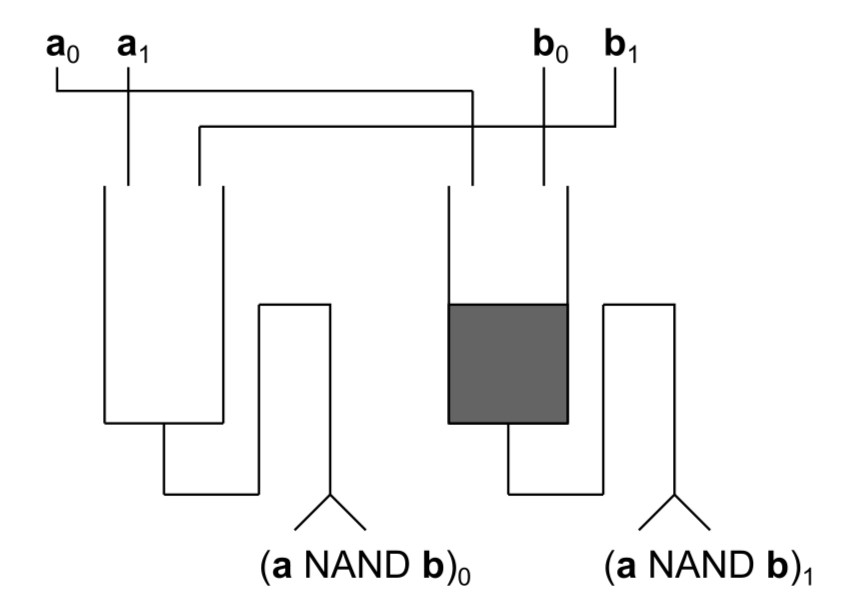A one-shot logic circuit is one that can only be run once, and after that cannot be used again unless it is possible to reset it. Think about a system of toppling dominoes : some people have made circuits using dominoes, but once the dominoes have fallen the circuit can’t be used again.
A one-shot circuit is practically useless, but the idea is useful for thinking about making logic systems using physical objects because sometimes it is easier to make a one-shot system than a reusable system.
To make a one-shot siphon-based logic system, we first of all consider the behaviour of a single empty siphon with two input pipes.

The volume V is less than the volume needed to make the siphon overflow, but if a volume 2V is added to the siphon, it will overflow and empty, with each output c and d emitting a volume V.
So if the siphon is initially empty, then only if both inputs a and b receive a volume V will outputs c and d be active : an initially empty siphon behaves like a conventional AND gate.
If the siphon starts with a volume V, then it behaves like a conventional OR gate - an input in either or both of the inputs will cause it to produce an output.
Since we can make both an AND and an OR gate, we can build a dual-rail logic gate in which the passage of a volume V along a 1 pipe or a 0 pipe represents a single logical value. The picture below shows how two siphons can implement the dual rail NAND gate shown in the previous log entry.

This NAND gate has a fan out of 2 (each siphon has two outputs), so we can make larger circuits by connecting gates together.
In the next part of the explanation I will show examples of how larger circuits can be made, and explain that circuits can be reused by resetting them back to their initial state.
 will.stevens
will.stevens
Discussions
Become a Hackaday.io Member
Create an account to leave a comment. Already have an account? Log In.